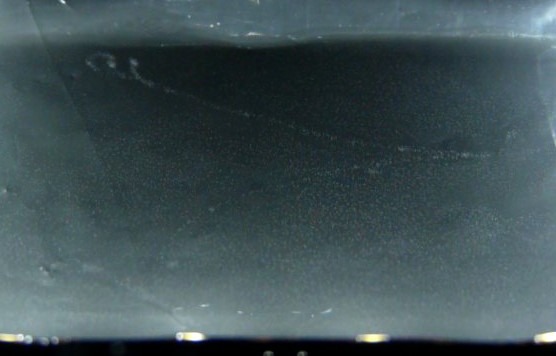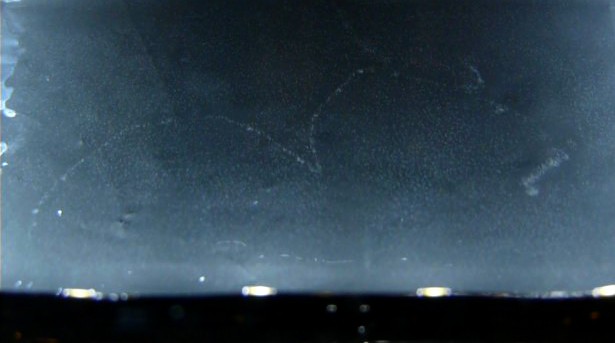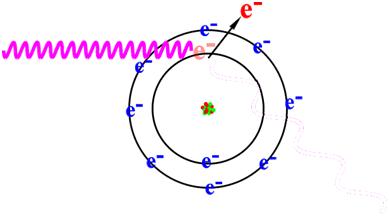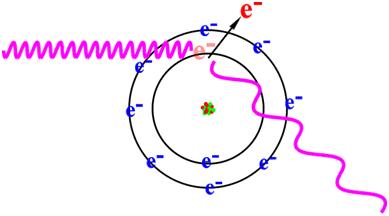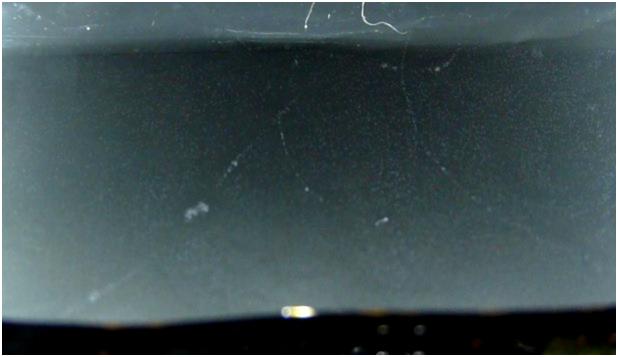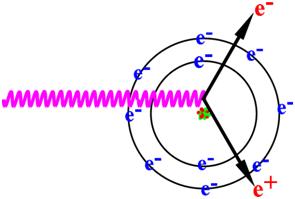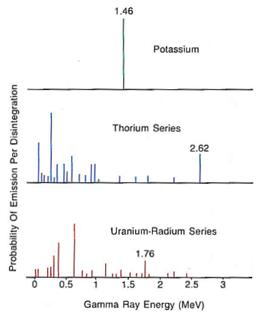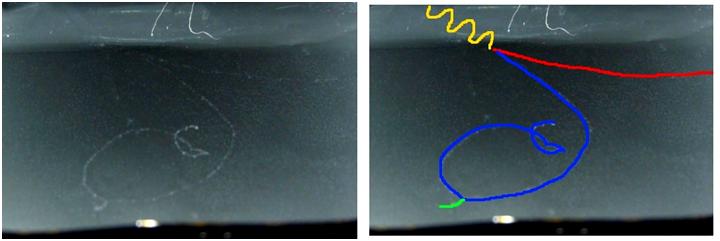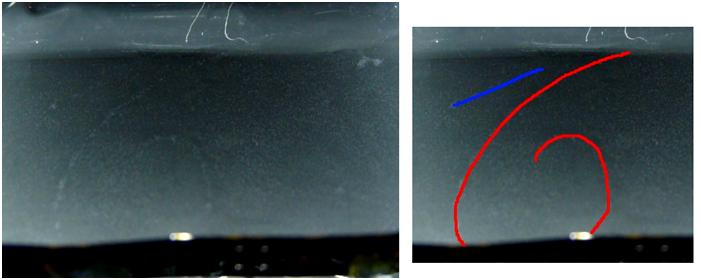Gamma rays
Gamma rays are different from Alpha and Beta. They are not particles but electromagnetic waves (even though they can be modeled as photons (cf: wave-particle duality)) produced during various events such as radioactive decay, fusion, and fission. Gamma rays from radioactive decay commonly have energies of a few hundred keV, and almost always less than 10 MeV, they are sometimes classified as x-rays if their frequencies are lower than 1019 Hz.
When an atom undergoes Alpha or Beta decay, the nucleus is left in an excited state and one way to make it stable again is to emit a Gamma ray. An atom emitting a Gamma ray does not change its identity since it doesn’t gain or lose a proton, a neutron nor an electron;
Since Gamma rays are electromagnetic waves, they have no charges nor masses so they don’t leave trails in the cloud chamber. However they interact with matter in different ways (photoelectric effect, Compton Effect, pair creation) which allows us to detect their presence and to measure their energies.
a. Photoelectric effect
When a Gamma ray interacts with matter by photoelectric effect, it transmits all its energy to an electron (of the inner shells) which is ejected from the atom.
Figure 21 : Photoelectric effect
Photoelectric effect is the main source of interaction with matter for Gamma with energies under 0.1 MeV
Work in progress
b. Compton effect
When a Gamma ray interacts with matter by Compton Effect, it transmits a part of its energy to an electron (of the outer shells) which is ejected from the atom. The incoming Gamma ray is deflected and has lower energy (lower frequency).
Figure 22 : Compton effect
Compton Effect is the main source of interaction with matter for Gamma with energies from 0.1 MeV to 10 MeV
In the next experience, minerals rich in uranium (which emit Gamma rays in their decay processes) are placed outside the cloud chamber and behind a 2mm aluminium plate. The plate and the glass of the chamber block all Alpha and Beta rays, so we can observe the effect of Gamma rays on the interacting surface of the chamber. We can observe electrons which are formed when Gamma rays interact with matter by Compton Effect:
Figure 23 : Electrons created by Compton effect on the wall of the chamber
c. pair creation (electron-positron)
In this process, an incoming Gamma ray (massless) is transformed into an electron (massive and negatively charged particle) positron (massive and positively charged particle) pair.
Figure 24 : Pair creation
This phenomenon puts in light the famous relation between Energy and Mass as formulated by Einstein: E=mc²
To achieve a pair creation, the energy of the gamma ray must at least equal the energy equivalent to the mass of an electron (0.51 MeV) and a positron (0.51 MeV) so It takes at least 1.01 MeV to obtain a pair creation. When the Gamma ray has energy higher than 1.01 MeV it transfers the surplus energy into kinetic energy to the 2 particles. Gamma rays resulting from radioactive decay with enough energy are quite rare. In the next graph, we can see the few naturally occurring radioisotopes with enough energy (Potassium 40, Bismuth 214 in the Uranium decay chain and Thallium 208 in the Thorium one).
Figure 25 : Energy of the Gamma rays from naturally occurring isotopes
In the following experiences, I’ll try to obtain those highly energetic Gamma rays by different ways:
- Using Uranium minerals whose activity is quite intense but whose probability of emitting high energy Gamma rays is low.
- Using Potassium whose activity is quite weak but with a higher probability of emitting High energy gamma among all radiations.
- Using high energy gamma rays from the naturally occurring cosmic rays
Figure 26 : Electron and positron from pair creation
On this snapshot, we witnesses the transformation of a Gamma ray (in yellow) in an electron deflected to its right by the magnetic field (in blue) and a positron deflected to its left (in red). On the path of the electron, another electron is ejected after being extracted from its shell (in green).
Figure 27 : Positron from pair creation
This photo shows the inverted spiral of a positron (in red) caused by the magnetic field. The electron can be seen (in blue) but is slightly less deflected because it’s a little bit outside of the magnetic field.
For the pair creations above, the radius of curvature is high, which tells us that the incoming Gamma ray had a very high energy what’s give us the proof that it was created by a cosmic ray.
On the snapshots below, I'm presenting a few others pair creations, with various energies and radius of curvature, because that's such a beautiful event to witness. I still hope to obtain the perfect pair creation (well centered and with 2 nice and complete lobes). Running the apparatus and reviewing the videos in that goal is a true delight !
